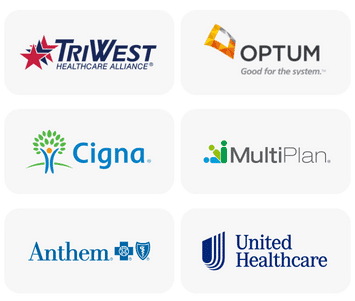Fentanyl is a dangerous synthetic opioid drug that is currently the leading cause of U.S. overdose deaths, according to data from the CDC and the National Institute of Drug Abuse. The Drug Enforcement Administration (DEA) classifies fentanyl as a schedule ll drug, which means it has a high potential for abuse and dependence and is approved only for specific medical uses.
What is Fentanyl?
Fentanyl is a frequently prescribed opioid painkiller50 to 100 times stronger than morphine. Fentanyl’s strength makes it suitable for the most severe forms of pain, such as breakthrough cancer pain and post-surgical pain. Unfortunately, this high potency helps cause fentanyl addiction.
Like all members of the opioid family of medications, fentanyl blocks pain receptors in the brain and increases dopamine production. Dopamine is a brain chemical that controls the learning and reward system. Dopamine also affects our ability to control pain, feel happy, and experience pleasure.
Fentanyl’s potency and ability to cause intense euphoria make it more addictive than many other drugs of abuse. Thanks to the skyrocketing levels of fentanyl addiction, fentanyl is currently the leading cause of U.S. overdose deaths, according to data from the CDC and the National Institute on Drug Abuse.
Fentanyl street names include:
- China white
- China girl
- TNT
- Crush
- Dance fever
What Is Fentanyl Used For?
Fentanyl is an analgesic used for chronic pain or severe pain. Often, fentanyl is given to people who have become tolerant to other opioid medications. It is used to relieve breakthrough pain — episodes of pain that persist even though other opioid drugs have been tried.
Where Does Fentanyl Come From?
Fentanyl is a synthetic opioid that was created in a lab. Most of the illegal fentanyl in the U.S. comes from foreign sources. According to the Drug Enforcement Agency, illicit labs in China, Mexico, and India are the most significant sources of illegal fentanyl.
Fentanyl Abuse Statistics
Drug overdose deaths exceeded 100,000 in 2021. Seventy-five percent of those deaths were due to fentanyl and other human-made opioids.
Fentanyl has been implicated in overdose deaths because it is commonly used to lace other drugs, like heroin. Frequently, people do not even know that fentanyl is in the drug they are taking. This results in many unintentional overdoses.
Campus Drug Prevention, an initiative by the Drug Enforcement Administration (DEA), says that fentanyl-laced cocaine is a particular concern across college campuses today. If you use any illicit drug, there is the possibility that it is laced with fentanyl.
Self-Assessment: Am I Addicted?
" *" indicates required fields
Ways People Take Fentanyl
Fentanyl is one of the most potent narcotics in existence. It’s a synthetic opioid, meaning it’s made in a lab and is not naturally occurring. Other highly addictive opioids, like heroin and morphine, come from the poppy plant and are called opiates.
Some popular name brands and routes of administration of fentanyl will include:
- Actiq
Commonly referred to as a fentanyl lollipop, it is administered under the tongue for quick pain relief. This form is used for patients who are already taking painkillers medication.
- Duragesic
Coming in the form of a skin patch, this type of fentanyl is prescribed to treat severe to moderate pain, with the effects lasting as long as three days.
- Sublimaze
Sublimaze is administered in hospitals through an IV injection. This form of fentanyl is used to manage pain before and after surgery.
- Subsys
This form of fentanyl is a sublingual spray administered under an individual’s tongue to deliver pain relief immediately. Its purpose use is for the treatment of breakthrough cancer pain.
- Abstral
Abstral is primarily used for opioid-tolerant patients who experience breakthrough cancer pain. This is a fentanyl pill form of a tablet that dissolves quickly by being placed under the tongue.
- Lazanda
Lazanda is a fentanyl nasal spray. As with all forms of nasal spray painkillers, this form of fentanyl gets into a person’s system quickly.
Illicit fentanyl sold on the street is usually found in pill or tablet form. Illegal fentanyl may sometimes be sold in brightly colored pills called “ rainbow fentanyl.”
What Does Fentanyl Addiction Look Like?
Because of its potency, it’s easy to get addicted to fentanyl. You can develop a physical dependence quicker than other drugs, and pretty soon, you’ll find yourself using it less for the high and more to keep withdrawal symptoms away.
Your brain eventually gets used to performing with it, making you less likely to feel its effects with your regular dose. This is called drug tolerance.
Consistent use of fentanyl causes your body to depend on it to continue functioning. Drug dependence occurs when you cannot stop using the drug without withdrawal symptoms. All opioid drugs have uncomfortable, sometimes painful withdrawal syndromes. Fentanyl is no exception.
Fentanyl also causes powerful cravings.
Fentanyl Withdrawal Symptoms
Some fentanyl withdrawal symptoms will include:
- Nausea and vomiting
- Anxiety
- Yawning
- Runny nose
- Diarrhea
- Sweating
- Chills
- Insomnia
- Muscle pain
- High blood pressure
- Elevated heart rate
- Stomach cramps
- Depression
- Agitation
- Cravings
Fentanyl withdrawal symptoms can be excruciating. The intense cravings to use fentanyl will worsen as fentanyl addicts become desperate to stop the withdrawal symptoms. Fortunately, though, fentanyl withdrawal symptoms can be reduced or avoided for people willing to accept help from a fentanyl addiction treatment program.
Fentanyl Withdrawal Symptoms Timeline
Fentanyl withdrawal symptoms usually start within 2 to 4 hours of the last dose. This may take longer for individuals who are using fentanyl patches, which is a slower-release delivery system. In this case, fentanyl withdrawal symptoms will primarily start within a 24-to-36-hour period of removing the patch.
The length of the fentanyl detox process is hard to predict because everybody will experience a different variety and range of symptoms. Primarily, though, withdrawal symptoms will taper off and stop after 5 to 10 days.
The fentanyl withdrawal timelinewill usually follow a general pattern, but specific factors will affect each patient’s level of withdrawal.
Some of these factors that will affect fentanyl withdrawal include:
- Overall health
- Gender
- Age
- Kidney and liver health
- Previously attempting detox
- Genetic and biological makeup.
- Co-occurring mental health disorders
- Concurrent use of other drugs
- Use of medically assisted detox
Some individuals will develop symptoms lasting well beyond the acute withdrawal timeline. These are protracted withdrawal symptoms, which could last weeks and sometimes months.
Fentanyl Overdose
A fentanyl overdose is a threat to your life. The injectable drug naloxone reverses the effects of an overdose, but several doses of this antidote may be necessary because fentanyl is much more potent than other opioids. Even after a person receives naloxone, they must get medical help immediately.
Using fentanyl with other drugs can be lethal. Drug users often overdose on fentanyl because they don’t know their drugs have been cut with it. For example, they may take their usual amount of heroin, but if there’s fentanyl in it, the typical amount is much stronger. This overloads the user’s system. The body can’t process it quickly enough, so it sets in motion reactions that can cause an opioid overdose , like respiratory depression and extreme imbalances in the central nervous system.
To mix fentanyl with other drugs like cocaine or heroin will amplify the drug’s adverse side effects. In fact, illicitly produced fentanyl is often added to other drugs to increase their addictiveness. Users are often unaware and have a greater risk of an opioid overdose.
Xylazine (“tranq”), an animal tranquilizer, has become a common, life-threatening additive to illicit fentanyl. The combination of xylazine and fentanyl is a significant contributor to the current epidemic of opioid overdose deaths.
What does a fentanyl overdose look like?
The dangers of fentanyl are so severe because it slows a person’s breathing and heart rate. If a person’s breathing and heart rate slow too much, the brain and major organs don’t get enough oxygen and die. It doesn’t take much fentanyl to kill. An amount of fentanyl equal in size to 10 or 15 table salt grains is a fatal dose.
According to the CDC, these are the typical signs of a fentanyl overdose:
- Slow, shallow breathing
- Interrupted breathing or not breathing
- Choking, rattling, or gurgling sounds
- Stupor or loss of consciousness
- Small, constricted “pinpoint” pupils
- Falling asleep or losing consciousness
- Limp body
- Cold and clammy skin
- Blue or bluish skin (especially on lips and nails)
A person won’t get over a fentanyl overdose alone and can’t “sleep it off.” A person showing these symptoms needs emergency medical attention immediately. A naloxone injection reverses the effects of any opioid, but a person overdosing still needs emergency medical care.

How Do You Treat Fentanyl Addiction?
Treating fentanyl addictionis a process, not an event, and requires the assistance of addiction medicine specialists. The fentanyl addiction treatment process includes medical detox, inpatient and outpatient treatment, and a thorough aftercare plan. You should never try to quit taking fentanyl cold turkey without consulting your doctor. Quitting fentanyl abruptly can be painful and dangerous.
Medical Detox for Fentanyl
Withdrawal and detox from fentanyl should never be attempted without medical help. Opioid withdrawal can be uncomfortable and dangerous in some situations. You’re also at an increased risk of relapse and overdosing if you try to detox from opioids on your own. Fentanyl withdrawal symptoms vary by individual and severity of addiction but may include:
- Muscle and bone pain
- Vomiting
- Diarrhea
- Agitation
- Extreme feelings of hot or cold
- Anxiety
- Insomnia
- Sweating
- Cravings
Going through fentanyl detox in a treatment center keeps you safe and as comfortable as possible during withdrawal. A medical team monitors your vitals and comfort level. They can provide medications that ease withdrawal symptoms and cravings.
The detox process typically lasts 5 to 7 days but may be longer in some cases. A thorough evaluation during the intake process will help determine the outcome of the time needed for a detox.
The detox process will be performed in a specialized substance abuse treatment center. Depending on the patient’s specific needs, the detox process can be done in a residential or outpatient program. In a residential facility, detox is called medical detox because it includes medical and mental health support provided by treatment professionals giving around-the-clock service.
The patient’s vital signs will be monitored to ensure their safety, and medications are often administered to help with emotional and physical withdrawal symptoms. Residential detox programs are highly recommended for fentanyl withdrawal.
Sometimes, fentanyl will be replaced by a different opioid during detox. Combination medications may also be used for post-detox after fentanyl and all other opioids are entirely flushed out of the system. Supplementary medications are also helpful during medical detox
Opioid use disorders are some of the toughest addictions to overcome. An inpatient treatment program is usually necessary to offer the most intensive treatment and distance from triggers. Residential treatment programs give you round-the-clock access to addiction professionals. They can manage lingering withdrawal symptoms as you go through the treatment process. In a drug rehab center, you’ll also address the underlying issues that fuel your drug use and learn healthy coping skills to stay sober.
Types of Inpatient and Outpatient Therapy for Fentanyl Addiction
According to the National Institute on Drug Abuse (NIDA), treatment for substance use disorders must be tailored to your unique needs to be effective. There isn’t a one-size-fits-all approach that works for everyone.
Your treatment team will build a plan that makes sense for your particular fentanyl addiction. This plan will likely change as you progress in recovery.
Individual Therapy
Individual therapy is an excellent opportunity to explore issues during group therapy more deeply. You can also discuss challenges you’re not ready to discuss in a group setting.
You’ll develop a trusting relationship with a counselor. One-on-one therapy gives you a safe space to explore challenges that fuel drug abuse like:
- Trauma
- Negative thinking patterns
- Relationship issues
- Family roles
- Poor self-esteem
- Symptoms of co-occurring disorders like depression and anxiety
Group Therapy
Group therapy is an essential part of substance abuse treatment. Connecting with peers who understand what you’re going through helps you feel less isolated in your addiction. You’ll cover topics relevant to recovery and practice coping skills. Hearing from others about their struggles may give you new insight into yours. You’ll practice healthy ways of communicating and relating to others.
Family Therapy
Drug addiction impacts both the substance user and their loved ones. You and your loved ones will learn to communicate better in family therapy. You’ll discuss difficult topics with the help of behavioral health workers and mental healthcare professionals. Loved ones will learn the signs of relapse and how to help you.
Traditional and Alternative Approaches
A blend of traditional and alternative treatment approaches helps you heal. Cognitive behavioral therapy (CBT) and eye movement desensitization and reprocessing (EMDR) are proven treatments for substance abuse and mental health disorders. Alternative approaches like yoga, mindfulness, and art therapy complement traditional therapies and help you begin reconnecting your mind and body.
Medication-Assisted Treatment (MAT)
Trauma and mental illnesses often contribute to substance abuse. This is called co-occurring disorders or dual diagnosis. Psychiatric symptoms can be managed with antidepressants and anti-anxiety medications. You may also require medication-assisted treatment (MAT). MATs are medications that “trick” your brain into thinking you’re taking opioids without giving you the high. This can help ease withdrawal symptoms and cravings so you can focus on treatment.
These are the most commonly given drugs used in MAT:
- Naltrexone .A monthly injection is known to prevent opioid cravings. It requires that you are compliant in your treatment. It is known to be safe.
- Buprenorphine.Available on its own or in combination with another medication. It is a sublingual dose of medication known to interact with the same chemical messengers influenced by opioids. It prevents cravings and allows you to deal with symptoms of withdrawal. It is not known to cause a high.
- Methadone.Used by people whose opioid addiction is severe. It prevents withdrawal symptoms and cravings for opioids. Methadone may be used as a replacement medication for those chronically abusing fentanyl.
Relapse Prevention
Drug relapse is related to physical, psychological, and social factors. Your relapse risk is tied to factors like:
- Quality of your support system
- Living arrangements
- Duration of drug use
- Physical and psychological dependence
- Presence of mental health disorders
- Resilience in the face of triggers
Continuing Care Planning
You must be connected with addiction recovery resources that support long-term sobriety. Aftercare may include:
- Therapists
- Physicians
- Psychiatrists
- 12-step groups
- Sober living residences
These resources help you continue building coping skills and are a source of support when you’re struggling.
Does Insurance Cover Fentanyl Addiction Treatment?
Your insurance plan may cover some or all behavioral health treatment. The best way to find out if your insurance provides benefits for addiction and mental health treatment is to call us for a free insurance benefits check. We’ll work directly with your provider to determine your benefits and out-of-pocket costs.
Get Help Today
Don’t let another day pass if you or a loved one is experiencing a fentanyl addiction. At Footprints to Recovery, we know how overwhelming it can be to consider reaching out for treatment. Still, by doing so, you’re making a lifesaving decision. Our facility provides top-of-the-line addiction treatment to help you or a loved one become sober and encourage total physical, mental, and spiritual growth, making long-term recovery possible.
Our team at Footprints to Recovery will help you end addictive behaviors. A happy, healthy lifestyle is within reach. Contact us today to learn more about our addiction treatment programs.
- https://www.drugabuse.gov/publications/drugfacts/fentanyl
- https://www.dea.gov/sites/default/files/2020-06/Fentanyl-2020_0.pdf
- https://www.ncbi.nlm.nih.gov/pmc/articles/PMC8476199/
- https://www.drugabuse.gov/publications/drugfacts/fentanyl
- https://www.ncbi.nlm.nih.gov/books/NBK526012/
- https://www.thelancet.com/journals/lancet/article/PIIS0140-6736(07)60464-4/fulltext
Questions about treatment options?
Our admissions team is available 24/7 to listen to your story and help you get started with the next steps.


